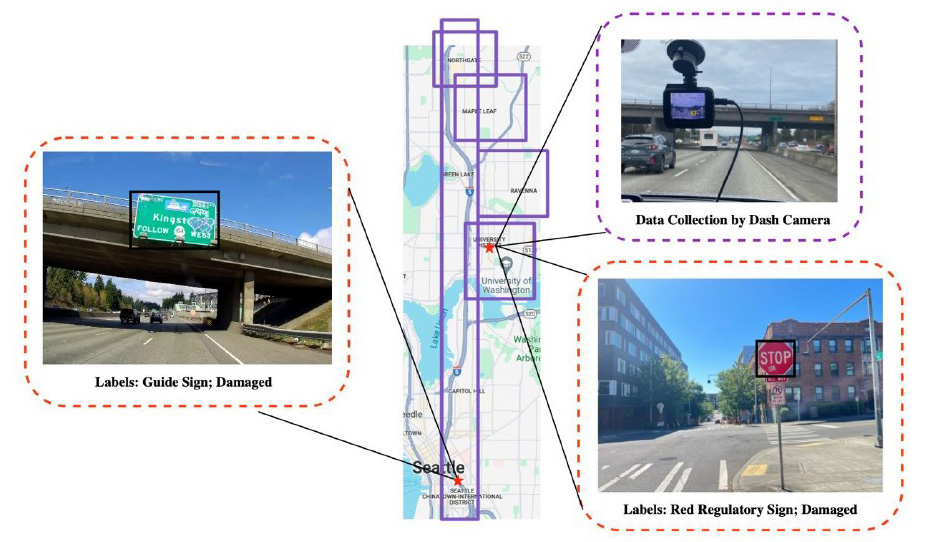An up-to-date inventory of highway traffic signs is essential for roadway safety, infrastructure maintenance, and support of intelligent road systems. This study investigated an automated approach for detecting, recognizing, and assessing the condition of traffic signs.
Traditional manual and semi-automated methods for sign inspections are inefficient and labor-intensive. This research developed an automated system for collecting traffic sign imagery and related information. The system leverages deep learning and computer vision to detect and classify traffic signs from log videos and open street images and to generate a comprehensive traffic sign inventory.
A key component of the system is a learning-based traffic sign detection and recognition algorithm. Additionally, the researchers explored traffic sign condition assessment based on six retro-reflectivity-related features. The integrated system consists of four modules: detection, tracking, assessment, and inventory building. Each was designed to perform a specific function, with the final inventory visualized geospatially. For this system, sparse R-CNN, software for object detection in images, was employed for detection and classification because of its superior balance between accuracy and computational efficiency. A deep neural network classifier was used for assessment.
To enhance model performance, a new traffic sign dataset tailored to Washington state traffic scenarios was developed and used for training.
The model successfully identified traffic signs in challenging environments, demonstrating its robustness for real-world deployment. Experimental results demonstrated high detection accuracy and reliable condition assessment (93.56 percent accuracy) while maintaining computational efficiency.
The developed system was integrated into a traffic sign inventory management framework that incorporates GPS data, classification results, and condition assessments. This interactive inventory enables real-time monitoring, query-based retrieval, and historical tracking of traffic signs. This will allow transportation agencies to streamline infrastructure management and optimize resource allocation.
By automating traffic sign management, this system provides a scalable, cost-effective solution that will allow transportation agencies to maintain accurate inventories, prioritize maintenance, and enhance roadway safety. This will help to ensure more reliable roadways and seamless mobility for all road users.
Report: WA-RD 946.1
Authors:
Yinhai Wang
Shucheng Zhang
Chenxi Liu
Nutvara Jantarathaneewat
UW Department of Civil and Environmental Engineering
Sponsor: WSDOT
WSDOT Technical Monitors:
Dina Swires
Trevor McCain
WSDOT Project Manager: Doug Brodin

